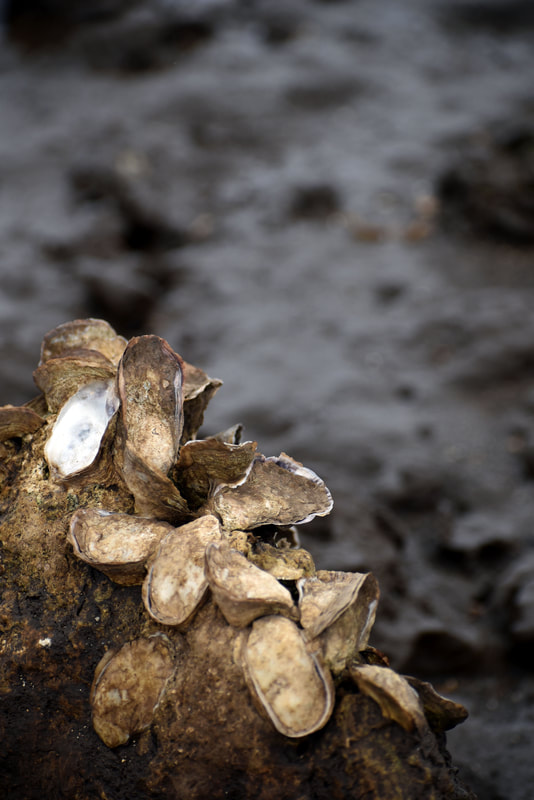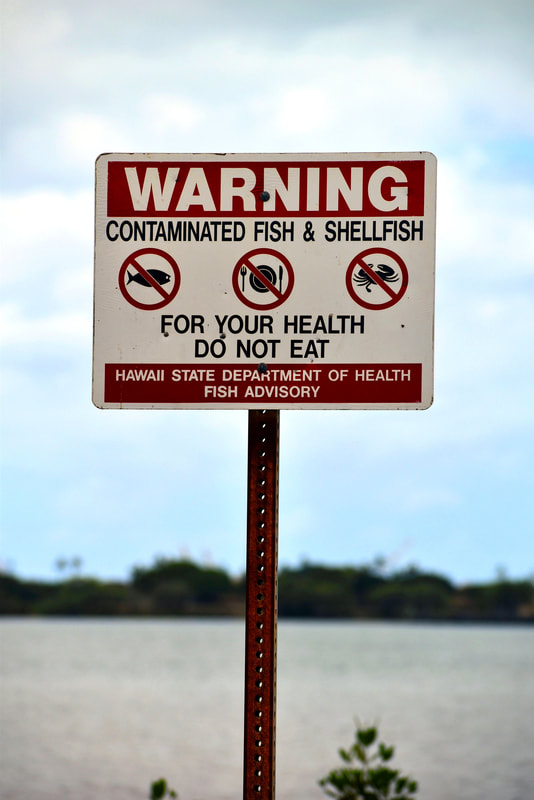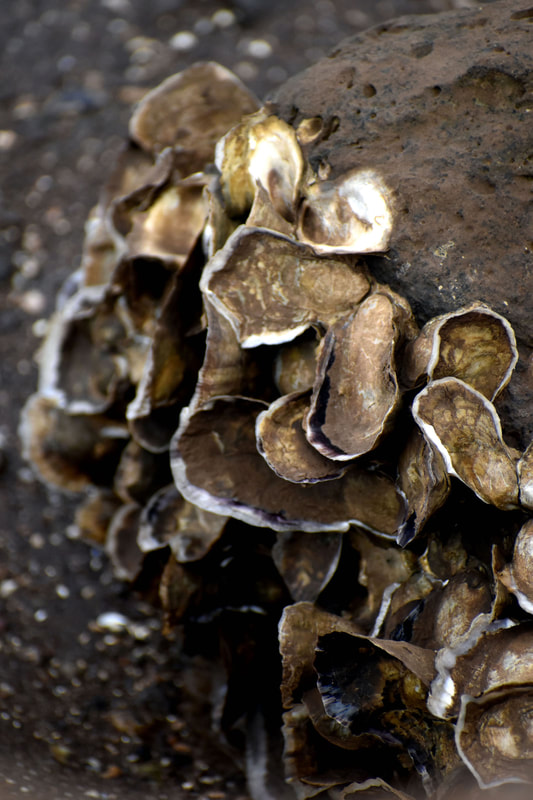A PEHEA IHOLA HOI NALOWALE AI NA BIPI NEI O EWA? (AND HOW DID THE OYSTERS OF EWA DISAPPEAR?) Digital Photographs 40 x 60 (2022)
I ka wa i nalo aku ai keia pipi, ua uluae la kekahi mea nihoniho keokeo ma na wahi a pau o ke kai o Ewa, a ua kapa iho na kanaka o Ewa i kona inoa he pahikaua, he mea oi keia. (Manu 1885)
At the time that these oysters disappeared, a white jagged, serrated object arose in each and every place on the ocean side of ‘Ewa, and the people of ‘Ewa named this object a “pahikaua,” which is a sharp, pointed thing.
I chose this quote from Leilani Basham's article, "Ka I'a Hamau Leo: Silences that Speak Volumes for Honouliuli" because it captures the connection between the violent presence of the military in Hawai'i and the disappearance of the endemic pipi (oyster) of Pu'uloa (Pearl Harbor). Pu'uloa which was once a primary food source with numerous fish and salt ponds and an abundance of meaty oysters, has become home to six superfund sites caused by more than a century of military contamination. Now Kanaka Maoli cannot eat anything within the harbor or even swim in the water without the risking serious illness or death. When the Rim of the Pacific Maritime Exercise (RIMPAC) arrives every two years, they invite countries from around the world to play war games in our kai, increasing the devastation to the environment. In 2021, the US Navy's Red Hill Bulk Fuel Storage facility leaked thousands of gallons of jet fuel into the fresh water pipelines poisoning the water supply from Moanalua to Pearl Harbor impacting 93, 000 people, including their own sailors and their families. Children were rushed to the hospital with severe rashes, some adults suffered from permanent neurological damage and other serious illnesses. The US desire for Pearl Harbor as a fueling station, has brought nothing but devastation to Hawai'i. Hawai'i deserves more than acting a as a gas station for empire. The need for the military to leave Hawai'i is long overdue.
I ka wa i nalo aku ai keia pipi, ua uluae la kekahi mea nihoniho keokeo ma na wahi a pau o ke kai o Ewa, a ua kapa iho na kanaka o Ewa i kona inoa he pahikaua, he mea oi keia. (Manu 1885)
At the time that these oysters disappeared, a white jagged, serrated object arose in each and every place on the ocean side of ‘Ewa, and the people of ‘Ewa named this object a “pahikaua,” which is a sharp, pointed thing.
I chose this quote from Leilani Basham's article, "Ka I'a Hamau Leo: Silences that Speak Volumes for Honouliuli" because it captures the connection between the violent presence of the military in Hawai'i and the disappearance of the endemic pipi (oyster) of Pu'uloa (Pearl Harbor). Pu'uloa which was once a primary food source with numerous fish and salt ponds and an abundance of meaty oysters, has become home to six superfund sites caused by more than a century of military contamination. Now Kanaka Maoli cannot eat anything within the harbor or even swim in the water without the risking serious illness or death. When the Rim of the Pacific Maritime Exercise (RIMPAC) arrives every two years, they invite countries from around the world to play war games in our kai, increasing the devastation to the environment. In 2021, the US Navy's Red Hill Bulk Fuel Storage facility leaked thousands of gallons of jet fuel into the fresh water pipelines poisoning the water supply from Moanalua to Pearl Harbor impacting 93, 000 people, including their own sailors and their families. Children were rushed to the hospital with severe rashes, some adults suffered from permanent neurological damage and other serious illnesses. The US desire for Pearl Harbor as a fueling station, has brought nothing but devastation to Hawai'i. Hawai'i deserves more than acting a as a gas station for empire. The need for the military to leave Hawai'i is long overdue.


